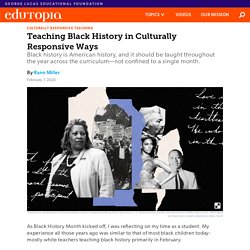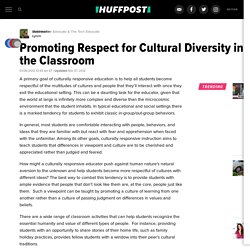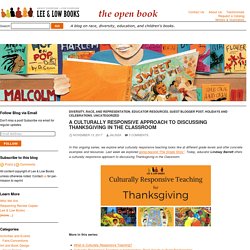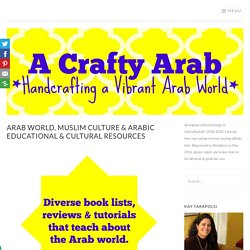

Teaching Black History in Culturally Responsive Ways. As Black History Month kicked off, I was reflecting on my time as a student.

My experience all those years ago was similar to that of most black children today: mostly white teachers teaching black history primarily in February. I was told of Martin Luther King Jr., Harriet Tubman, and Frederick Douglass. I heard very little of Malcolm X, the FBI’s campaign against civil rights leaders, the Rainbow Coalition put together by the Black Panther Party’s Fred Hampton, or Hampton’s assassination. I learned about the struggles of my enslaved ancestors, but not about Gabriel Prosser, Denmark Vesey, or Nat Turner. I was taught about the marches and firehoses in Alabama, but I had to teach myself about the acts of terrorism committed against black people in Rosewood, Florida; Tulsa, Oklahoma; and Wilmington, North Carolina. No matter what subject you teach, there are ways you can infuse black history into your daily lessons in a way that is prophetic and purposeful.
For Our White Friends Desiring to Be Allies. Author's Note: I'm writing this in hopes that it can be used to lighten the load of marginalized folks, keeping in mind that not all marginalized people want to engage in the ally conversation, and that is perfect as well.

For those who do, my prayer is that when someone asks you the question, “how can I be a stronger ally?” You might choose to save your breath/energy and send this in its place. I have been asked by two dear friends, “how can I be a stronger ally?” Being the slow emotional processor that I am, I wanted to spend some time with this before I answered them. I surely appreciate and love these two individuals, and I appreciate their vulnerability in asking me this question. I am not going to do much coddling here; I don’t know that I believe that love requires coddling. 1. 2. 3. 4. 5. 6. I love Jesus. Promoting Respect for Cultural Diversity in the Classroom. A primary goal of culturally responsive education is to help all students become respectful of the multitudes of cultures and people that they’ll interact with once they exit the educational setting.

This can be a daunting task for the educator, given that the world at large is infinitely more complex and diverse than the microcosmic environment that the student inhabits. In typical educational and social settings there is a marked tendency for students to exhibit classic in-group/out-group behaviors. In general, most students are comfortable interacting with people, behaviors, and ideas that they are familiar with but react with fear and apprehension when faced with the unfamiliar. How to Be an Antiracist Educator. A Culturally Responsive Approach to Discussing Thanksgiving in the Classroom. In this ongoing series, we explore what culturally responsive teaching looks like at different grade levels and offer concrete examples and resources.

Last week we explored going beyond “The Single Story”. Today, educator Lindsay Barrett offers a culturally responsive approach to discussing Thanksgiving in the Classroom. More in this series: Discussions of holidays can be challenging for teachers to navigate. School expectations can range from complete avoidance to blind participation in longstanding outdated projects and events.
The Harvest Discussions honoring the bounty of a harvest need not be limited to today’s stereotypical Thanksgiving menu or even what the colonists and Wampanoag actually ate. Food and Family Limiting multicultural teaching to discussions of different foods could be considered lingering in the “tip of the iceberg” category referenced above.
Arab, Muslim & Arabic Educational & Cultural Resources by A Crafty Arab. A Crafty Arab recommendations for Arab world, Muslim culture & Arabic educational and cultural resources to learn about the Middle East & North Africa.

Hopefully these lists are able to help any children educators or caregivers in search of diverse literature. Please follow A Crafty Arab on Facebook, Instagram, Pinterest, or Twitter to see when updates are added. Links include affiliate urls, which help support this blog. Arabic Alphabet Animal Poster is Here! Arabic Colors Animal Poster is here! Arabic Alphabet Card App is Here {Free Download} Free Arabic Alphabet Coloring Pages {Printable} Arabic Alphabet Coloring Book is Here! If you are a visual person, the following Pinterest board contains educational books that are for or about Arab and Muslim children. Crafty Arab Muslim Children Books 2020 Arab Muslim Children Books {Resource} 2019 Arab Muslim Children Books {Resource} 5+ Disabled Muslim Children Books {Resource} Racism explained to kids. Four Ways Teachers Can Support Students of Color.
10 things every white teacher should know when talking about race. This week on the Truth for Teachers podcast: 10 things every white teacher should know when talking about race in the classroom Let’s start by addressing the elephant in the room–why I am talking only to white people?

Isn’t that racist? (Hold that question in your mind, because I want you to ask yourself that same question again after you’ve read my words here, and see if your thought process has changed.) I’m specifically addressing white people in this episode because around 83% of teachers in the U.S. are white. Most of you reading my blog are in fact, white. They have literally no idea what to say, or feel like they don’t understand the history of people of color enough to contribute much to the conversation. This can’t happen, teacher friends. Now, I am no expert on race relations in America. People of color have no choice but to think about and understand race on a daily basis. Click play to listen to the episode, or download it to listen on the go: 1. 2. 3. No, you’re not crazy. 4. Culturally Responsive Teaching: 4 Misconceptions.